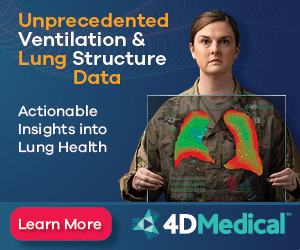▼ ADVERTISEMENT

Editor's E-Note
Immunotherapies have shown promise for many types of cancer, but only a percentage of patients respond to them. Recently, researchers from Peking University in Beijing, China, have developed a PET biomarker that allows physicians to predict tumor response before beginning treatment, a development that may one day enable individualized treatments. See this month’s E-News Exclusive for more details.
Please let us know how you like the newsletter on X, formerly known as Twitter, and/or Facebook.
Enjoy the newsletter.
— Dave Yeager, editor |
|
|
| In This E-Newsletter
|
 |
|
|
▼ ADVERTISEMENT

PET Biomarker Predicts Success of Immune Checkpoint Blockade Therapy
The protein galectin-1 (Gal-1) has been identified as a new PET imaging biomarker for immune checkpoint blockade (ICB) therapy, allowing physicians to predict the tumor responses before beginning treatment. Information garnered from Gal-1 PET imaging could also be used to facilitate patient stratification and optimize immunotherapy, enabling targeted interventions and improving patient outcomes. This research was published in the May issue of The Journal of Nuclear Medicine.
Immunotherapies, such as ICB, have produced promising clinical outcomes in melanoma, nonsmall cell lung cancer, and several other types of tumors. However, only a subgroup of patients experiences positive outcomes with objective response rates spanning between 5% and 60%.
“Developing reliable approaches for assessing responses and selecting eligible patients for immunotherapy remains challenging,” says Zhaofei Liu, PhD, Boya Distinguished Professor at Peking University in Beijing, China. “Current clinical criteria for monitoring solid tumor responses to immunotherapy are based on CT and MRI scans, but these methods result in a considerable delay between treatment commencement and response evaluation. Molecular imaging techniques, especially PET, have emerged as robust tools for predicting immunotherapy effectiveness through the real-time, quantitative, and noninvasive assessment of biomarkers in vivo.”
|
Hyperspectral Dark-Field Microscopy Distinguishes Cancerous Tissue ‘Rapidly’
A study published in the Journal of Biomedical Optics found that hyperspectral dark-field microscopy “rapidly” distinguished between cancerous and noncancerous cells within breast tissue.
▼ ADVERTISEMENT

Radiomics and MRI Can Identify Meniscus Tear Risk
Using radiomics and MRI images of people with unharmed menisci, researchers were able to predict with 70% accuracy those who would go on to develop meniscus tears. Their study is published in the Journal of Orthopaedic Research.
AI-Based Foundation Models May Help Identify Cancer Biomarkers
Researchers from Mass General Brigham have used foundation models, AI trained on a range of data, to read radiologic scans containing abnormalities to predict malignancy and provide prognosis. Their study is published in Nature Machine Intelligence. |
“Using advancements in AI and 3D spatial biology techniques, Tripath provides a framework for clinical decision support and may help reveal novel biomarkers for prognosis and therapeutic response. ... Tripath is our first attempt to use deep learning to extract subvisual 3D features for risk stratification, which shows promising potential for guiding critical treatment decisions.”
▼ ADVERTISEMENT

— Faisal Mahmood, PhD, and Jonathan Liu, PhD, cocorresponding authors from the division of computational pathology in the department of pathology at Mass General Brigham and the University of Washington, respectively, on their study of a deep-learning model using 3D imaging to better predict cancer outcomes |
|
|
COVER STORY
An Interesting Case
Forensic radiology can forgo the need for traditional autopsy, reducing the burden on forensic pathologists during ongoing worker shortages.
FEATURE
Standing By
The presence of parents during pediatric MRI procedures can have both positive and negative effects.
|
|
|
| Advertising Opportunities |
Have a product or service you want to market to radiology professionals? Utilize the reach of Radiology Today Magazine to accomplish your marketing goals. Email our experienced account executives today at sales@gvpub.com or call 800-278-4400 for more information.
|
| © 2024 Radiology Today Magazine |
|
|